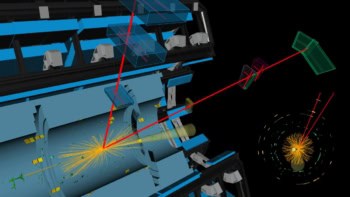A working group charged with charting the next quarter-century of United States particle physics has called for the country to give highest priority to ‘a high-energy, high-luminosity electron-positron linear collider, wherever it is built in the world.’ This facility, states the group's draft report, ‘is the next major step in the field and should be designed and operated as a fully international effort.’
The group, a subpanel of the High-Energy Physics Advisory Panel (HEPAP) of the Department of Energy and the National Science Foundation, recommends that the US should ‘take a leadership position in forming the international collaboration needed to develop a final design, build, and operate this machine.’ Its report, presented this week at a two-day meeting of the full HEPAP panel chaired by Frederick Gilman of Carnegie Mellon University’s department of physics, also calls on the US to prepare a bid to host the linear collider.
In addition the subpanel recommends that:
* The US should take steps to remain a world leader in particle physics, through a broad programme of research focused on the frontiers of matter, energy, space, and time.
* A 20-year roadmap should be organized to chart advances in the field, replete with a mechanism to update the roadmap and set priorities across the entire field.
* Vigorous, long-term R&D aimed at future high-energy accelerators should be organized as a high priority.
The subpanel’s draft does not represent the final word in the long-range plan for high-energy physics. The full HEPAP panel will release the final report in January 2002. Theoretically, the panel could make wholesale changes to the subpanel’s draft. Most likely, however, the panel will merely tweak parts of it.



